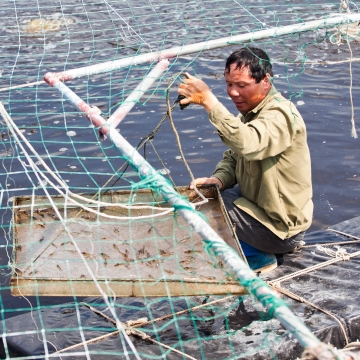Economic and Environmental interactions between salmon aquaculture and artisanal fisheries: “An Application of Reloncavi estaury”
A bio-socio-economic model was developed to analyze the economic and environmental interactions between the aquaculture activity and artisanal fisheries related to the seed settlement of Mytilus Chilensis that is realized in the Reloncaví Fjord. Meaning by economic interactions the effects of the action of both productivities activities has on the employment and production variables of this sectors. And for environmental interactions the effect that has the aquaculture activity on the seed settlement activity, in terms of the uneaten food pellets (nutrients).
